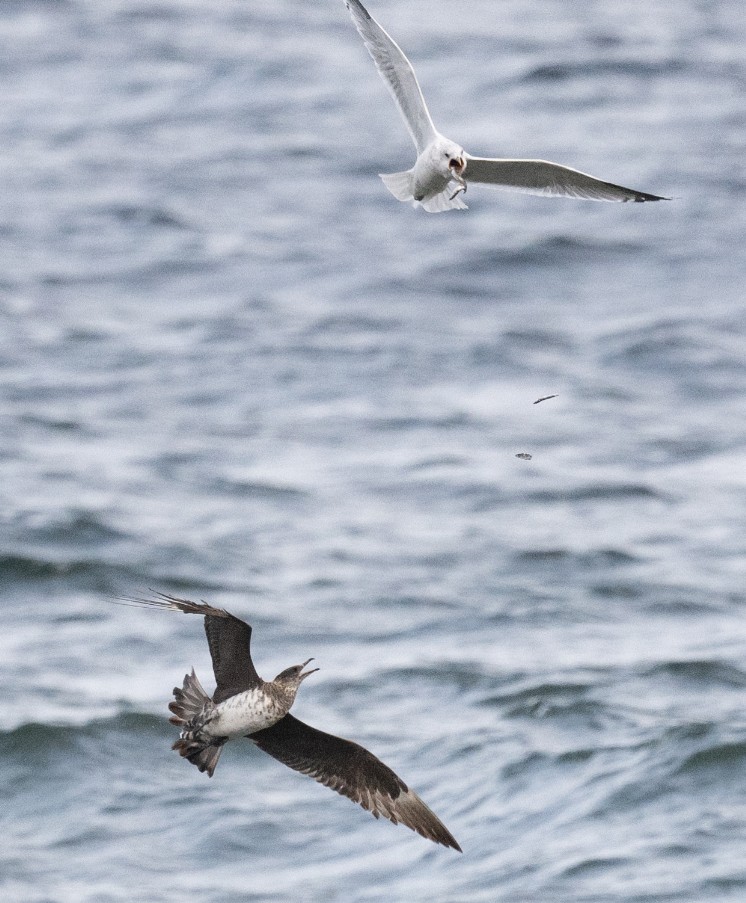Arctic Skua
Reports

In September 2024 there were two reports of Arctic Skua round Arran’s coast. The first one was on 1 September in Brodick Bay and the second record was on 29 September in Sannox Bay. Arctic Skua is an uncommon passage migrant not reported every year on Arran.
The Arctic Skua is a seabird in the skua family. It is a migratory species that breeds in Northern Scandinavia, Northern Scotland, Iceland, Greenland, Northern Canada, Alaska and Siberia, wintering at sea in the tropics and southern oceans. While much of the migration is over sea, overland spring migration does occur. The UK breeding population of Arctic Skuas has declined by 70% between 2000 and 2019, a trend that is reflected in other parts of northern Europe including the Faeroes, Iceland and Norway. These declines are thought to be due to poor food availability during the breeding season, which has caused declines in the seabirds that the skuas steal from. This reduces the food available for the skuas. A lack of food means the skuas can’t provide for their chicks, so fewer young birds survive to fledge each year.
Kleptoparasitism is the name given to when one animal deliberately steals food from another. Arctic Skua are experts at it. In North America the bird is called Parasitic Jaeger; parasitic because of its habit of stealing food from other birds; and jaeger derived from the German word for hunter - because of its predatory nature.
Arctic Skua has a fast and powerful flight that can also be nimble and manoeuvrable. There’s something exhilarating about the aerobatic display that ensues as the skua pursues its chosen victim, both birds twisting and turning high in the sky and back down to the sea, until finally, the victim either regurgitates its last meal or the Arctic Skua gives up and finds another target.
On 29 September in Sannox Bay Sarah Hanson managed to capture the essence of this movement in her photograph as the sub-adult Arctic Skua heads up towards the harassed gull that is regurgitating its last meal. The skua will take the food often in the air and move on to the next victim.
Finally, adult Arctic Skuas have two colour phases: a light phase, with a white belly and dark back and cap; and a dark phase, which is uniformly dusky brown. The adult birds have two, pointed central tail feathers that stick out beyond their main tail, and display broad, white flashes on the undersides of their wings.